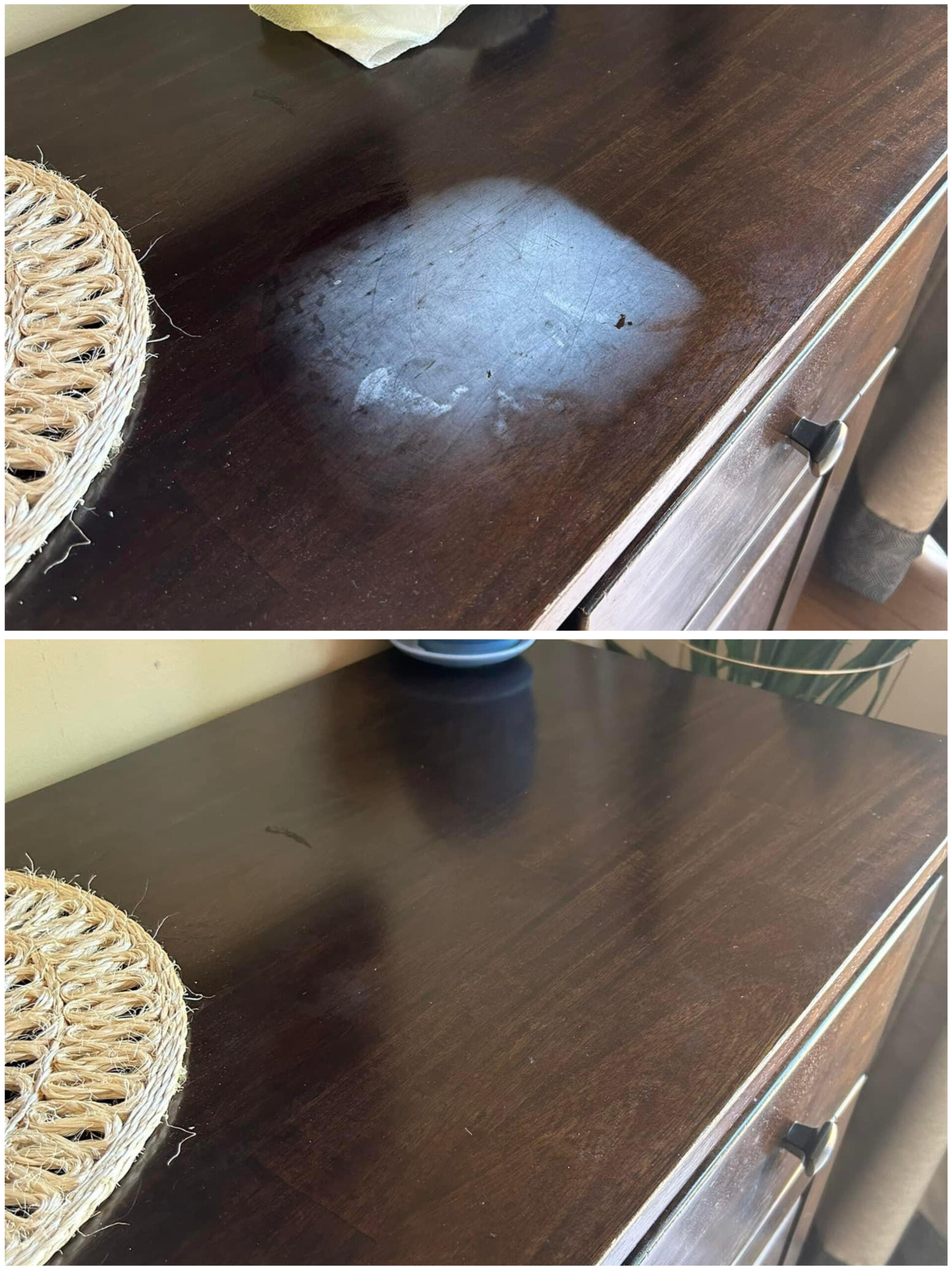Introduction
Heat spots on wooden furniture can be a frustrating and unsightly issue. These marks are often caused by placing hot dishes directly on the surface, resulting in white or cloudy stains. If you’ve found yourself dealing with such a blemish, don’t worry. With a simple combination of olive oil, a tea towel, and a hot iron, you can restore your furniture to its former glory. Here’s a step-by-step guide on how to effectively remove heat spots from wood surfaces.
Understanding Heat Spots
Heat spots occur when moisture gets trapped under the finish of wooden furniture. The heat from dishes or other hot objects causes this moisture to rise, leaving behind unsightly white or cloudy marks. These spots can be tricky to remove, but with the right technique, your furniture can look as good as new.
What You Need
- Olive oil
- Soft cloth
- Tea towel
- Iron
Step-by-Step Instructions
1. Apply Olive Oil
- Prepare the Area: Clean the affected area gently with a soft, dry cloth to remove any dust or debris.
- Apply Olive Oil: Pour about a half teaspoonful of olive oil directly onto the heat spot. Olive oil helps to moisturize the wood and can penetrate beneath the finish to assist in removing the stain.
- Rub the Oil In: Use a soft cloth to rub the olive oil into the spot. Work in small, circular motions to ensure the oil is well absorbed by the wood.
2. Use a Tea Towel and Iron
- Cover with a Tea Towel: Place a clean tea towel over the area where you applied the olive oil. This towel acts as a barrier between the wood and the iron.
- Heat the Iron: Set your iron to a medium heat setting. Ensure there is no water in the iron to avoid adding moisture to the wood.
- Iron the Spot: Carefully place the hot iron over the tea towel and move it back and forth over the heat spot. Apply gentle pressure as you iron.
- Check Frequently: Every 30 seconds, lift the iron and tea towel to check the progress. The heat from the iron helps to evaporate the trapped moisture causing the spot.
3. Patience and Persistence
- Repeat the Process: Continue ironing and checking every 30 seconds. The process may take up to 10 minutes, but be patient. Gradually, you should see the heat spot begin to fade and eventually disappear.
- Final Touch: Once the spot is removed, wipe the area with a clean, dry cloth to remove any excess oil.
Tips for Success
- Test a Small Area: Before applying olive oil and heat to a prominent part of your furniture, test the method on a small, inconspicuous area to ensure it doesn’t damage the finish.
- Keep Moving: Avoid holding the iron in one place for too long as it could cause further damage. Keep the iron moving to distribute the heat evenly.
- Use the Right Temperature: Ensure the iron is set to a medium heat. Too high a temperature can scorch the wood, while too low may not be effective.
- Be Patient: Removing heat spots can take time. If the spot doesn’t come off immediately, don’t rush. Continue the process patiently for the best results.
FAQs
Can I Use Other Oils Instead of Olive Oil?
Yes, other oils like vegetable oil or mineral oil can also be effective. Olive oil is commonly used because it’s readily available and safe for most wood finishes.
What If the Spot Doesn’t Come Off?
If the spot remains after trying this method, you may need to repeat the process or try a different technique, such as using a mixture of baking soda and water to create a paste. Rub the paste into the spot and let it sit for a few minutes before wiping clean.
Is This Method Safe for All Types of Wood?
While this method is generally safe for most finished wood surfaces, it’s always a good idea to test it on a small, hidden area first to ensure it doesn’t damage the finish.
Can I Use This Method on Antique Furniture?
For valuable or antique furniture, it’s best to consult a professional before attempting any DIY remedies. Antique finishes can be delicate, and professional restoration might be necessary.
How Can I Prevent Heat Spots in the Future?
To prevent heat spots, always use coasters, trivets, or placemats under hot dishes. Avoid placing hot items directly on wood surfaces to maintain the beauty of your furniture.
By following these steps and tips, you can effectively remove heat spots from your wooden furniture, restoring its appearance and extending its life. Patience and the right technique are key to achieving the best results. Enjoy your beautifully restored furniture and the satisfaction of a job well done!

